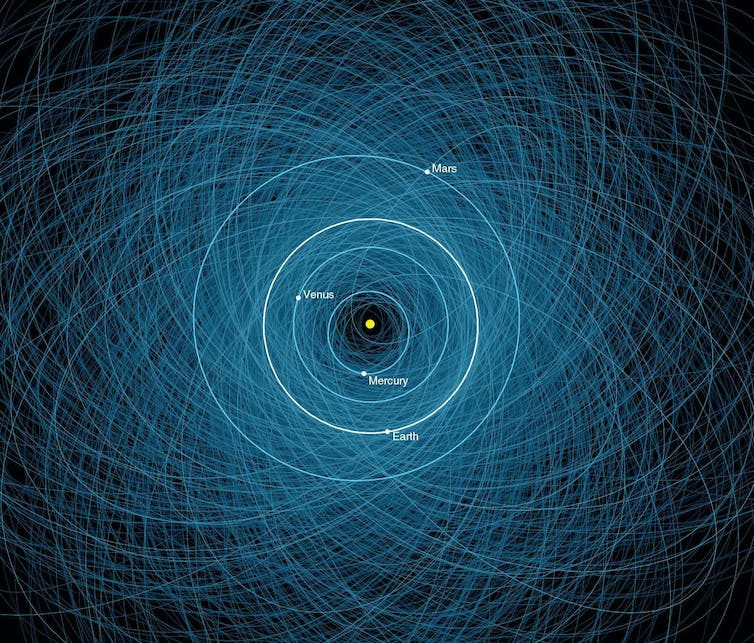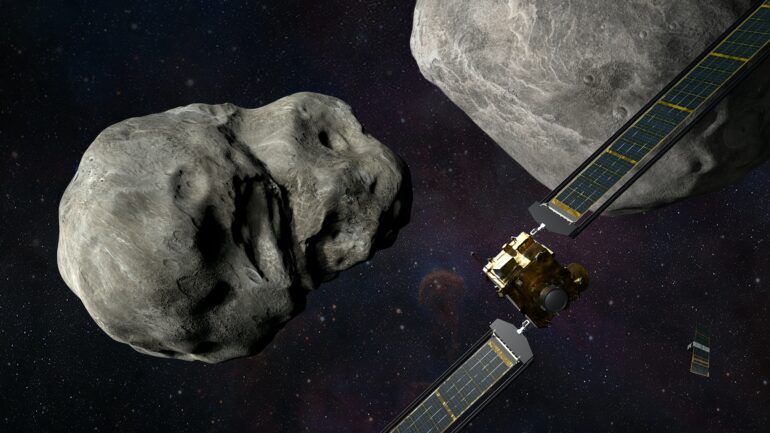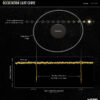On Sept. 26, 2022, NASA plans to change an asteroid’s orbit.
The large binary asteroid Didymos and its moonlet Dimorphos currently pose no threat to Earth. But by crashing a 1,340-pound (610-kilogram) probe into Didymos’ moon at a speed of approximately 14,000 mph (22,500 kph), NASA is going to complete the world’s first full-scale planetary defense mission as a proof of concept. This mission is called the Double Asteroid Redirection Test, or DART.
I am a scholar who studies space and international security, and it is my job to ask what the likelihood really is of an object crashing into the planet – and whether governments are spending enough money to prevent such an event.
To find the answers to these questions, one has to know what near-Earth objects are out there. To date, NASA has tracked only an estimated 40% of the bigger ones. Surprise asteroids have visited Earth in the past and will undoubtedly do so in the future. Experiments like the DART mission may help prepare humanity for such an event.

The orbits of thousands of asteroids (in blue) cross paths with the orbits of planets (in white), including Earth’s.
NASA/JPL
The threat from asteroids and comets
Millions of cosmic bodies, like asteroids and comets, orbit the Sun and often crash into the Earth. Most of these are too small to pose a threat, but some can be cause for concern. Near-Earth objects include asteroids and comets whose orbits will bring them within 120 million miles (193 million kilometers) of the Sun.
Astronomers consider a near-Earth object a threat if it will come within 4.6 million miles (7.4 million kilometers) of the planet and if it is at least 460 feet (140 meters) in diameter. If a celestial body of this size crashed into Earth, it could destroy an entire city and cause extreme regional devastation. Larger objects – 0.6 miles (1 kilometer) or more – could have global effects and even cause mass extinctions.
The most famous and destructive celestial impact took place 65 million years ago when an asteroid with a 6-mile (10-kilometer) diameter crashed into what is now the Yucatán Peninsula. It wiped out most plant and animal species on Earth, including the dinosaurs.
But smaller objects can also cause significant damage. In 1908, an approximately 164-foot (50-meter) celestial body exploded over the Podkamennaya Tunguska River in Siberia. It leveled more than 80 million trees over 830 square miles (2,100 square kilometers). In 2013, an asteroid only 65 feet (20 meters) across burst in the atmosphere 20 miles (32 kilometers) above Chelyabinsk, Russia. It released the equivalent of 30 Hiroshima bombs’ worth of energy, injured over 1,100 people and caused US$33 million in damage.
The likely next asteroid of substantial size to potentially hit Earth is asteroid 2005 ED224. When the 164-foot (50-meter) asteroid passes by on March 11, 2023, there is roughly a 1 in 500,000 chance of impact.

